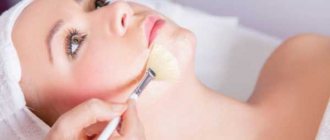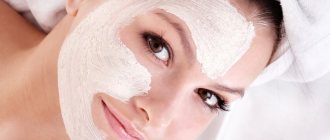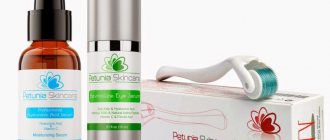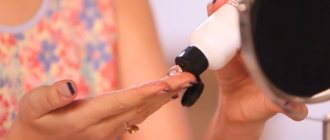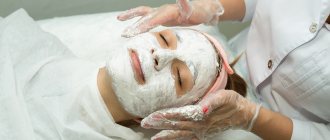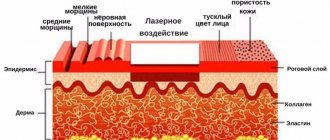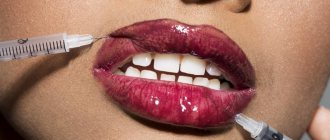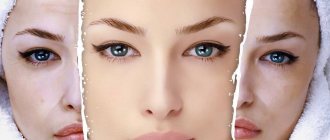Restoring youth to the skin is the goal of facial peeling; before and after photos leave no doubt about its effect. Every woman dreams of looking young. The frantic pace of life, poor ecology, and constant stress affect the condition of the face, causing premature aging. The result is early wrinkles, dull color, age spots, loss of elasticity. An exfoliation procedure will help cope with these problems. There are many varieties of this cosmetic manipulation. They differ in the type of substance used and the depth of impact.
Age-related changes are not the only reason to use chemical exfoliation. People with serious skin defects in the form of scars, scars, stretch marks, post-acne have a chance to get rid of them or make them less noticeable. You can evaluate how effective chemical facial peeling is in a salon using a photo in which the result is obvious. It is worth noting that the procedure is highly traumatic, so you should only trust qualified professionals.
What it is?
Our skin is constantly renewing itself, so exfoliating old cells is a natural process. But in real life, due to improper nutrition and care, stress, hormones and the environment, the process does not always proceed as it should. The skin flakes, becomes dull, clogged pores appear and much more serious consequences. Peeling removes that same old layer, giving freedom to renewed cells.
How to do it at home: stages of the procedure
You can do facial peeling yourself at home. The step-by-step procedure is divided into 4 stages:
- Preparatory. The skin should be thoroughly cleaned of makeup. To do this, you need to treat your face with a cotton pad soaked in a cleansing solution. Then apply a tonic that will restore water balance.
- Basic. The selected acid solution should be applied to well-cleansed skin. After some time, a tingling sensation will be felt. You shouldn’t be afraid of such sensations - this is how the composition begins to work.
- Neutralizing. After the required time has passed, you need to apply a neutralizing solution to the skin, which will help restore the protective barrier.
- Final. After the procedure, you must apply a moisturizer.
You can choose a peeling composition from pharmaceutical preparations:
- salicylic acid tablets;
- hydrogen peroxide 3%;
- camphor or boric alcohol;
- baking soda;
- sea salt;
- badyaga;
- fruit acid concentrate;
- calcium chloride solution no more than 5-10%.
Types of peeling by depth of influence
This classification of the procedure takes into account how strongly and deeply the peeling affects the skin. While some types can be introduced into home care, others definitely require the participation of a certified specialist!
Superficial facial peeling
This is the softest and most delicate procedure with a slight exfoliating and smoothing effect. Usually it is done one time, and not in a course. It helps with fine wrinkles and blemishes and is also great at preventing rashes.
Medium facial peeling
In this case, the effect penetrates the entire thickness of the stratum corneum. In addition to smoothing wrinkles and lightening age spots, this procedure is suitable for getting rid of scars and scars.
Deep facial peeling
The most difficult procedure is done strictly as directed, because it is very aggressive. The skin is exposed to the entire thickness of the epidermis. It helps in combating dermatological problems and for rejuvenation. Most often, deep peeling is quite painful, but it triggers powerful regeneration processes.
Which one is better to choose?
The need to regularly remove dead skin particles is due to the natural process of cell death. Exfoliation, or cleansing of the surface layer - the epidermis, occurs monthly. Under the damaged “dead” layer lies new, fresh skin that can fully absorb oxygen and moisture. The procedure normalizes metabolic processes and nutrition of the skin, which significantly increases their protection from external negative influences.
Many people mistakenly believe that peeling is an exclusively rejuvenating procedure. However, different types and features of the procedure are based on indications for use.
It is impossible to make an unambiguous and generalized choice for everyone, because all situations are individual. If a person only wants to refresh the skin color, even light exfoliation will help. But for some this will not be enough, and the procedure will be ineffective.
Some options in cosmetology are considered universal (in particular, light peeling), while experts consider the deep type to be more effective. But such a procedure requires the use of anesthesia and is performed only on the recommendation of a dermatologist or cosmetologist.
The cosmetics industry provides consumers with a colossal choice of both the products themselves and the most popular methods of using them. That is why you need to approach the issue of peeling with all responsibility, so as not to harm the skin. Its type, individual characteristics and existing contraindications should be taken into account.
Techniques and methods
Peeling is also distinguished by the method of exposure. This means that different drugs and different equipment are used. All of them can be divided into four large categories.
Mechanical peeling
It can be cosmetic, using scrubs - and is used rather to cleanse and lightly exfoliate the skin. Or it can be hardware-based - using special brush attachments or a vacuum apparatus. In any case, the point is the abrasive effect. This is a superficial or mid-superficial procedure.
Chemical peeling
Acidic preparations cause a microburn to old cells, causing them to die and open a new layer. For the superficial treatment, soft fruit, lactic and glycolic acids are used. For medium - more concentrated salicylic or acetic acid, and for deep - phenols.
Ultrasonic peeling
This is a hardware procedure, but it has long been classified as a separate category. Roughly speaking, ultrasound knocks out all impurities from the skin, so that it cleanses and becomes softer. In fact, it is more of an ultrasonic cleaning.
Laser peeling
Depending on the settings, the laser beam penetrates to different depths and produces different effects. Superficial cold and hot laser peeling makes the skin velvety, smooth and elastic. Medium and deep grinding helps with scars, deep wrinkles and even when removing tattoos.
How much do the procedures cost?
Before you sign up for the procedure, it’s worth finding out: how much does chemical facial peeling, diamond or mechanical, cost? Exact prices depend on several factors:
- From the city in which the salon is located;
- From the location and level of the cabin;
- From education as a cosmetologist;
- Depending on the type of cleaning and materials used.
Average rates will be displayed in the table below.
| Chemical | 850 rubles |
| Mechanical | 1600 rubles |
| Ultrasonic | 1500 rubles |
| Laser | 6500 rubles |
| Fruit | 1450 rubles |
| Diamond | 2200 rubles |
This is the approximate price for the procedures. You can find out specific prices in the salon of your choice.
Make sure that the final price includes all additional components: facial cleansing, application of a moisturizing mask, powder or cream to close pores. In some salons, these services are calculated separately, which can be an unpleasant surprise when paying.
Flaws
For salon peeling to be as effective as possible, it must be done regularly. After the procedure, the skin requires special care and careful handling. It is not recommended to do chemical peeling in the summer when the sun is too active.
Only a specialist can choose the type of peeling and frequency of procedures to suit your skin. An incorrectly performed procedure or improper aftercare can lead to the appearance of age spots, rosacea, and redness.
Medium chemical peeling: influence on the balance of power in cosmetology
The widespread introduction of medium-length chemical peeling into clinical practice has significantly influenced the balance of power in cosmetology. On the one hand, a method has appeared in the hands of doctors for a fairly radical solution to a number of cosmetic problems, especially those related to photoaging. On the other hand, patients have the opportunity to obtain good results from the correction of a number of cosmetic defects with a completely acceptable rehabilitation period and a low risk of complications, which are quite common after laser and phenol peeling, and rehabilitation after which is much more difficult. The introduction of midline chemical peeling also significantly influenced the results of surgical correction of age-related skin defects. The combination of plastic surgery with THC chemical peeling gives much more pronounced positive results than performing plastic surgery alone.
Material prepared by Ulyanova Irina Valentinovna
How to care for your skin after peeling
The main rule after any peeling is to always apply sunscreen. Even in winter or if you only go outside for five minutes, otherwise this is a sure way to premature aging and age spots. You can also use antioxidant serums with vitamins C and E.
After chemical peeling, you should not use decorative cosmetics until the skin is completely restored. For care, use only those products that have been selected by a specialist. Avoid gyms and any workouts, baths, saunas, beaches for a week. You should absolutely not use anything abrasive, acidic or simply too aggressive.
Contraindications, precautions
Ready-made peeling masses for self-use are classified as superficial.
They can be used at any time of the year; the course and break between procedures are specified by the manufacturer in the instructions.
These are 1-2 procedures per week, a course of 10-15 sessions.
Professional peels for use in beauty salons should be used under the supervision of a cosmetologist; independent use can cause burns of varying degrees or premature aging of the skin.
It is better not to experiment with these drugs, otherwise the consequences can be very disastrous.
Contraindications:
- the presence of foci of inflammation in the treated area (wounds, pustules, rashes, pimples, acne);
- mechanical damage to the epidermis (abrasions, open wounds, cracks);
- exacerbation of herpes;
- skin diseases;
- acute infectious diseases;
- period of pregnancy and lactation;
- tendency to allergic reactions.
The skin constantly needs cleansing; this is the only way it can maintain its elasticity, freshness and attractiveness.
You should take care of your face throughout all seasons, but you need to do it wisely, carefully selecting procedures, taking into account seasonal characteristics.
With this approach, the skin will look great throughout the year, delighting its owner with long-lasting youth and unfading beauty.
